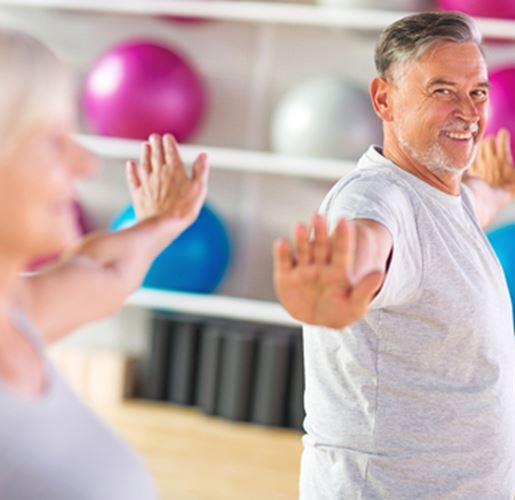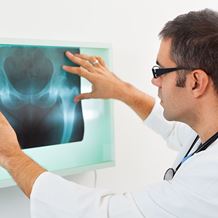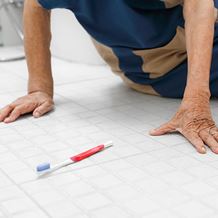Top 5 Tips to Age-Proof your Hips
Mr Parminder J Singh
- Home
- Services
- Orthopaedics
- Knowledge Hub
- An Orthopaedic Surgeon’s 5 Top Tips to Age-Proof Your Hips
They say hips don’t lie, and unfortunately, they may be right. Hips might be one of the biggest giveaways of age — once you’ve hit 60, you’ve got a 1 in 4 chance of experiencing hip pain.
Mr Parminder J Singh is an Orthopaedic Surgeon with St Vincent’s Private Hospital East Melbourne. Want to know what a medical professional recommends for how to keep hips healthy? Here are his five top tips to age-proofing your hips and reducing your risk of ending up on the operating table!
Tip 1: Monitor your Bone Density
If you’re female and have reached menopause, Mr Parminder J Singh recommends asking your GP for a bone density check to measure the thickness and quality of your bone. Reduced bone density can put you at increased risk of sustaining a hip fracture.
In Australia, an estimated 924,000 Australians have Osteoporosis. The disease is responsible for two million broken bones and $19 billion in related costs every year. By 2025, experts predict that osteoporosis will be responsible for approximately three million fractures and $25.3 billion in costs annually.
Due to undertreatment and disease mismanagement and an aging population, these numbers will continue to rise, particularly if patients don’t take action to improve their diagnosis and management of Osteoporosis.
Your GP can start you on medication and a management plan to help strengthen your bones.

Tip 2: Eat a mineral-rich diet
Make sure your diet contains the essential minerals for bone health—calcium in particular—and you’re getting enough sun for your Vitamin D levels. Mr Parminder J Singh explains that most people in Australia don’t need supplements if their diet is healthy. Take a look at the current dietary recommendations for Osteoporosis. If you do require a calcium supplement, your doctor will recommend the right dose for you.
Smoking and alcohol are also detrimental to bone health; speak to your doctor about a treatment plan to help you with a smoking or alcohol habit, and visit the Quit Now website for resources for smokers.
Tip 3: Organise your home and activities to prevent falls
Mr Parminder J Singh recommends organising your home to reduce your risk of falling. Keep objects off your stairs and floors. Fall-proof your bathroom with slip-resistant bathmats and grab bars in the bathtub. Take care in the garden, particularly in wet seasons, and avoid ladders or standing on unsteady furniture. Get your eyes checked regularly; poor vision frequently causes falls in older people.
Tip 4: Exercise for strength, balance and agility
Regular exercise is vital for maintaining mobility and general health. Weight-bearing activities like walking and running will strengthen your muscles, bones and protect your hip joints—just remember to wear proper footwear and avoid ill-fitting shoes! Low-impact exercises like swimming and cycling are also great options for those who are unable to run. Yoga and Pilates can improve flexibility and strengthen your back and abdomen, promoting proper balance and preventing falls. These activities also help you to practice good posture, which can help with hip pain. Poor posture can affect joints all over your body, so these low-impact exercises are great for making holistic improvements.
Mr Parminder J Singh cautions that certain activities can cause hip joint pain, damage or injury if performed incorrectly. Go gently, and have a physiotherapist ensure you have proper form.
For those interested in enhancing their routine, find suggested at-home exercises you can start doing at the end of the article! Please remember to consult with a healthcare professional before beginning any new exercise regimen.

Tip 5: Maintain a healthy weight
The more excess weight you carry, the more pressure your hips experience— something as simple as climbing stairs can become a mammoth task. If you’re at a healthy body weight, keep up your physical activity levels and nourishing diet. However, if you’re carrying some extra weight or struggling to keep your weight down, your doctor can help you with a diet plan and exercise regime to keep you at a healthy weight.
Excess weight doesn't just affect your hip joints—it can have a detrimental effect on other aspects of your health. Shedding extra weight will not only help with taking the strain off your hip muscles and other joints—it reduces the workload of your heart and can improve blood pressure. The positive effects are bountiful!
Hip problems in seniors can become extremely debilitating, and even fatal if not treated correctly. Taking steps to create healthy hips can be beneficial to your overall well-being and help you live a pain-free everyday life—and it’s also not that hard. Keep your hips strong and maintain good joint health to prevent injury, ease pain and live a better life.
Why do hips wear out?
Hips can "wear out" due to a combination of factors related to aging, genetics, lifestyle and musculoskeletal conditions. The term "hip wear" typically refers to the gradual deterioration of the hip joint's structures, including the bones, cartilage, ligaments and muscles. This deterioration can lead to conditions such as hip osteoarthritis, which is a common cause of hip pain and reduced mobility. While you can't fight genetics (or the marching of time), the tips that Mr Parminder J Singh has provided are designed to help you maintain healthy hips long into life.
Mr Parminder J Singh specialises in hip and knee arthroscopy as well as minimally invasive joint replacement surgery. As an active member of Hip Arthroscopy Australia (HAA), Board Member of the International Society of Hip Arthroscopy and Joint Preservation Surgery, Parminder is part of a group at the forefront of developing and teaching many of the hip arthroscopy techniques used in Australia and around the world today. His private consulting suite is located at 21 Erin Street, Richmond.
Exercise program to improve hip health
Incorporating a regular exercise program that promotes hip strength, flexibility and stability can help prevent injuries and alleviate discomfort. Here are some of the best exercises to keep your hips strong:
Hip flexor stretch: Stretching the hip flexors helps alleviate tension and maintain flexibility.
For your starting position, step into a lunge with one foot forward and the other extended behind you.
Lower your hips toward the ground while keeping your back straight.
Feel the stretch in the front of the hip of the extended leg.
Hold for 20-30 seconds on each side.
Glute bridges: Glute bridges strengthen the gluteal muscles and lower back muscles, promoting hip stability.
Lie on your back with your knees bent and feet flat on the ground.
Lift your hips off the ground, engaging your glutes and core.
Hold at the top for a moment before lowering back down.
Perform 10-15 repetitions.
Clamshells: Clamshells target the hip abductor muscles and enhance hip stability.
Lie on your side with your legs bent at a 90-degree angle.
Keep your feet touching and open your knees while keeping your feet together.
Slowly close your knees back together.
Perform 12-15 repetitions on each side.
Hip abduction with resistance band: This exercise strengthens the hip abductors and improves hip stability.
Secure a resistance band just above your knees.
Stand with feet hip-width apart and knees bent slightly.
Step sideways against the band's resistance, then step the other foot to follow.
Perform 10-12 steps in each direction.
Pigeon pose: Pigeon pose is a yoga stretch that improves hip flexibility and mobility.
Start in a high plank position, then bring one knee forward toward the same side wrist.
Extend the other leg back and lower your hips toward the ground.
Hold the stretch for 20-30 seconds on each side.
Lateral leg raises: Lateral leg raises target the hip abductor muscles.
Lie on your side with legs extended.
Lift the top leg upward while keeping your toes pointed slightly downward.
Lower the leg back down without letting it rest completely on the other leg.
Perform 12-15 repetitions on each side.
Hip circles: Hip circles improve hip mobility and flexibility.
Stand with feet hip-width apart.
Slowly move your hips in circular motions, both clockwise and counter-clockwise.
Perform 10-12 circles in each direction.
Squats: Squats engage the hips, glutes, and quadriceps, promoting overall lower body strength.
Stand with feet shoulder-width apart.
Lower your hips as if sitting back into a chair, keeping your back straight.
Return to the standing position.
Perform 10-15 repetitions.
Remember to start with gentle movements and gradually increase intensity as your hip strength and joint flexibility improve. If you have any pre-existing hip conditions or concerns, it's advisable to consult with a healthcare professional or a qualified fitness instructor before starting a new exercise routine.



